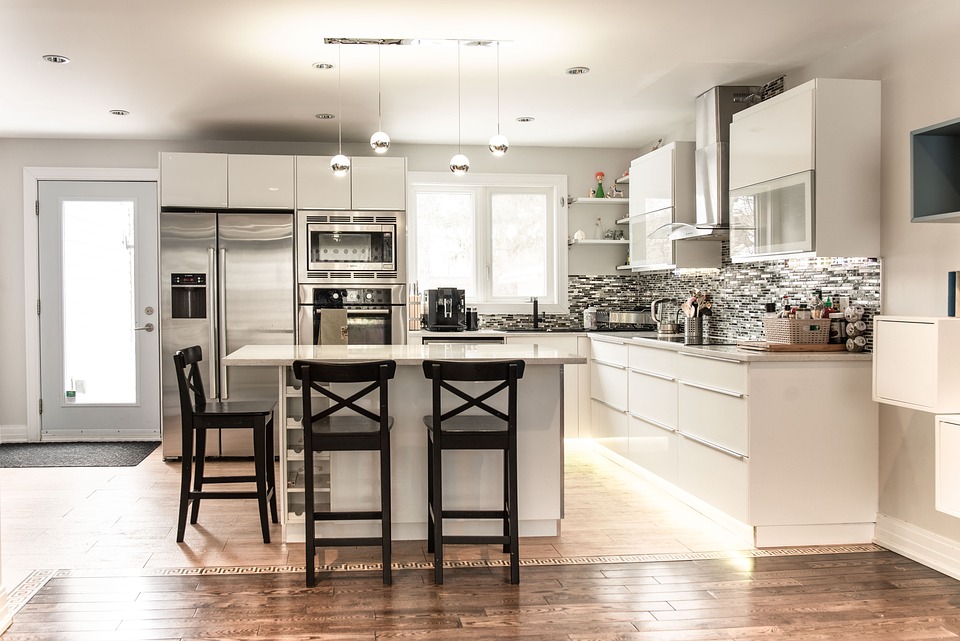Sustainable Home Renovations

Not only do they contribute to a healthier planet, but they also offer cost savings and improved well-being for homeowners. If you’re considering a renovation project, why not make it sustainable?
Why Choose Sustainable Renovations?
Embarking on a sustainable renovation is a decision that brings numerous benefits. Firstly, it reduces the carbon footprint of your home, making a direct impact on the environment. Secondly, it enhances energy efficiency, which can lead to significant savings on utility bills.
Finally, eco-friendly materials and designs often result in healthier indoor air quality and a more comfortable living space.
Planning Your Sustainable Renovation
The first step in any renovation is planning, and sustainable projects are no exception. Begin by evaluating your current energy consumption and identifying areas for improvement. Consider conducting an energy audit to pinpoint inefficiencies. Then, set clear goals for your renovation, such as reducing energy usage by a certain percentage or using a specific amount of recycled materials.
Setting a Budget
Sustainable renovations can sometimes come with a higher upfront cost, but they often pay off in the long run through energy savings and increased property value. Determine your budget early and explore financial incentives, such as tax credits or rebates, available for eco-friendly upgrades.
Choosing the Right Professionals
Working with contractors who specialize in sustainable building practices is crucial. Look for professionals with certifications in green building, such as LEED (Leadership in Energy and Environmental Design). They will have the expertise to recommend the best materials and techniques for your renovation.
Eco-Friendly Materials and Techniques
One of the most impactful aspects of a sustainable renovation is the choice of materials. Opt for products that are recycled, reclaimed, or sustainably sourced. Here are some options to consider:
Insulation
Improving insulation is one of the most effective ways to enhance energy efficiency. Choose insulation made from recycled materials, such as cellulose or denim, which provide excellent thermal performance without harming the environment.
Flooring
Sustainable flooring options include bamboo, cork, and reclaimed wood. Bamboo grows quickly and regenerates without the need for replanting, while cork is harvested from the bark of the cork oak tree without harming the tree itself. Reclaimed wood not only reduces the demand for new materials but also adds unique character to your home.
Paints and Finishes
Conventional paints can release volatile organic compounds (VOCs) into the air, affecting indoor air quality. Instead, choose low-VOC or VOC-free paints and finishes. These options are widely available and come in a variety of colors and finishes.
Energy-Efficient Upgrades
Incorporating energy-efficient upgrades into your renovation will significantly reduce your home’s energy consumption. Here are some upgrades to consider:
Lighting
Switching to LED lighting is a simple yet effective way to decrease energy use. LEDs use up to 80% less energy than traditional incandescent bulbs and last significantly longer.
Appliances
When replacing appliances, look for those with the Energy Star label. Energy Star appliances are designed to use less energy without sacrificing performance. Consider energy-efficient models for your refrigerator, dishwasher, and washing machine.
Solar Panels
Installing solar panels is a more significant investment but one that can pay off over time. Solar energy can power your home, reduce reliance on the grid, and even allow you to sell excess energy back to the utility company.
Water Conservation
Water conservation is another crucial aspect of sustainable home renovations. Implementing water-saving fixtures and systems can make a substantial difference:
Low-Flow Fixtures
Replace traditional faucets, showerheads, and toilets with low-flow alternatives. These fixtures reduce water usage without compromising performance, helping to conserve a precious resource and lower water bills.
Rainwater Harvesting
Consider installing a rainwater harvesting system to collect and store rainwater for non-potable uses, such as irrigation or flushing toilets. This reduces the demand on municipal water systems and makes your home more self-sufficient.
Creating a Healthier Indoor Environment
Sustainable renovations also focus on improving indoor air quality and creating a healthier living environment. Here are some strategies:
Ventilation
Proper ventilation is crucial for maintaining good indoor air quality. Ensure your home has adequate ventilation systems to expel pollutants and bring in fresh air. Consider energy recovery ventilators (ERVs) or heat recovery ventilators (HRVs) to maintain energy efficiency.
Natural Light
Maximizing natural light not only reduces the need for artificial lighting but also improves mood and well-being. Install larger windows or skylights to bring more daylight into your home.
Conclusion: Taking the First Step Towards Sustainability
Sustainable home renovations are an investment in the future, offering both environmental and personal benefits. By carefully planning your project, choosing eco-friendly materials, and implementing energy-efficient upgrades, you can create a home that is both beautiful and sustainable.
Start with small changes and gradually work your way towards a more sustainable lifestyle. Remember, every small step counts towards a healthier planet and a better quality of life.
As you embark on your renovation journey, let the goal of sustainability guide your decisions. With creativity and commitment, you can transform your home into a model of eco-friendly living, inspiring others to follow in your footsteps. Embrace the challenge, and enjoy the rewards of a greener, more sustainable home.






